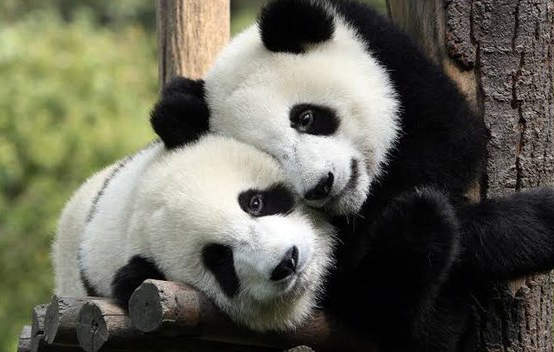The China National Animal, the Panda, is a beloved creature known worldwide for its unique appearance and gentle nature. As a human, we can appreciate the beauty and charm of this animal, while as a zoologist, we can dive deeper into the scientific and conservation aspects of the Panda.
The Panda (Ailuropoda melanoleuca) is a bear native to central China, particularly in the Sichuan, Shaanxi, and Gansu provinces. They are easily recognizable with their black and white fur, round faces, and cute appearance. The Panda has been a symbol of Chinese culture for centuries, and it became the national animal of China in 1961.
Physical Characteristics of the China National Animal
The Panda is a medium-sized bear, with males weighing up to 150 kg (330 lb) and females up to 125 kg (275 lb). They have a stocky build, with powerful legs and strong jaws. Their distinctive black and white fur provides camouflage in their native bamboo forests, and their large molars and strong jaw muscles help them grind up tough bamboo.
Habitat and Distribution of the China National Animal
Pandas are native to mountainous regions with dense bamboo forests. They can be found at elevations of 1,200 to 3,500 meters (3,900 to 11,500 ft) in the Sichuan, Shaanxi, and Gansu provinces of central China. However, due to habitat loss, their range has become fragmented, and their populations have declined. The International Union for Conservation of Nature (IUCN) classifies the Panda as a vulnerable species.
Behavior and Reproduction of the China National Animal
Pandas are solitary animals, except during the mating season. They are primarily active at dawn and dusk and spend the rest of their day sleeping or resting. Pandas are herbivores, and their diet consists mainly of bamboo. However, they will occasionally eat other vegetation and small animals. Pandas have a low reproductive rate, with females giving birth to one or two cubs every two to three years.
Panda Conservation Efforts
Panda conservation efforts have been ongoing for decades. There are many organizations dedicated to protecting the species, such as the World Wildlife Fund (WWF) and the China Conservation and Research Center for the Giant Panda (CCRCGP). The Chinese government has also implemented policies to protect the Panda's habitat and prevent poaching. Community-based conservation efforts have also been successful in promoting awareness and involving local people in conservation efforts.
Panda in Culture and Society
The Panda has played a significant role in Chinese culture for centuries, appearing in art and literature. In recent years, the Panda has also become a symbol of conservation efforts and wildlife protection worldwide. Pandas have been loaned to other countries as a form of "Panda diplomacy," strengthening international relations and promoting conservation efforts.
Conclusion
The Panda is a unique and beloved animal, and its conservation is crucial for maintaining biodiversity in its native habitat. As a human, we can appreciate the beauty and charm of the Panda, while as a zoologist, we can work to protect and preserve this iconic species for future generations.
References:
WWF. (n.d.). Giant Panda. https://www.worldwildlife.org/species/giant-panda
IUCN. (2021). Ailuropoda melanoleuca. https://www.iucnredlist.org/species/712/121745669
National Geographic. (2021). Panda. https://www.nationalgeographic.com/animals/mammals/p/panda/
